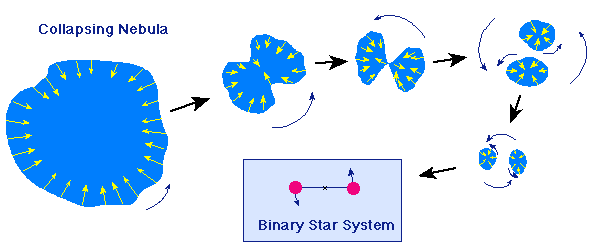 |
| Alternative to the nebular hypothesis that leads to binary star formation |
Our Solar System may not be the norm for stars in the Universe. The observational evidence is that most stars are parts of multiple star systems, not single stars like our Sun.
 |
| Alternative to the nebular hypothesis that leads to binary star formation |
Although planets might still form in such binary systems by a similar mechanism as discussed before, it is an open question whether they would have stable orbits that would keep them bound in the system without running into the stars. Another question, assuming such planets were on stable orbits, is whether they could have temperature ranges favorable for the formation of life.